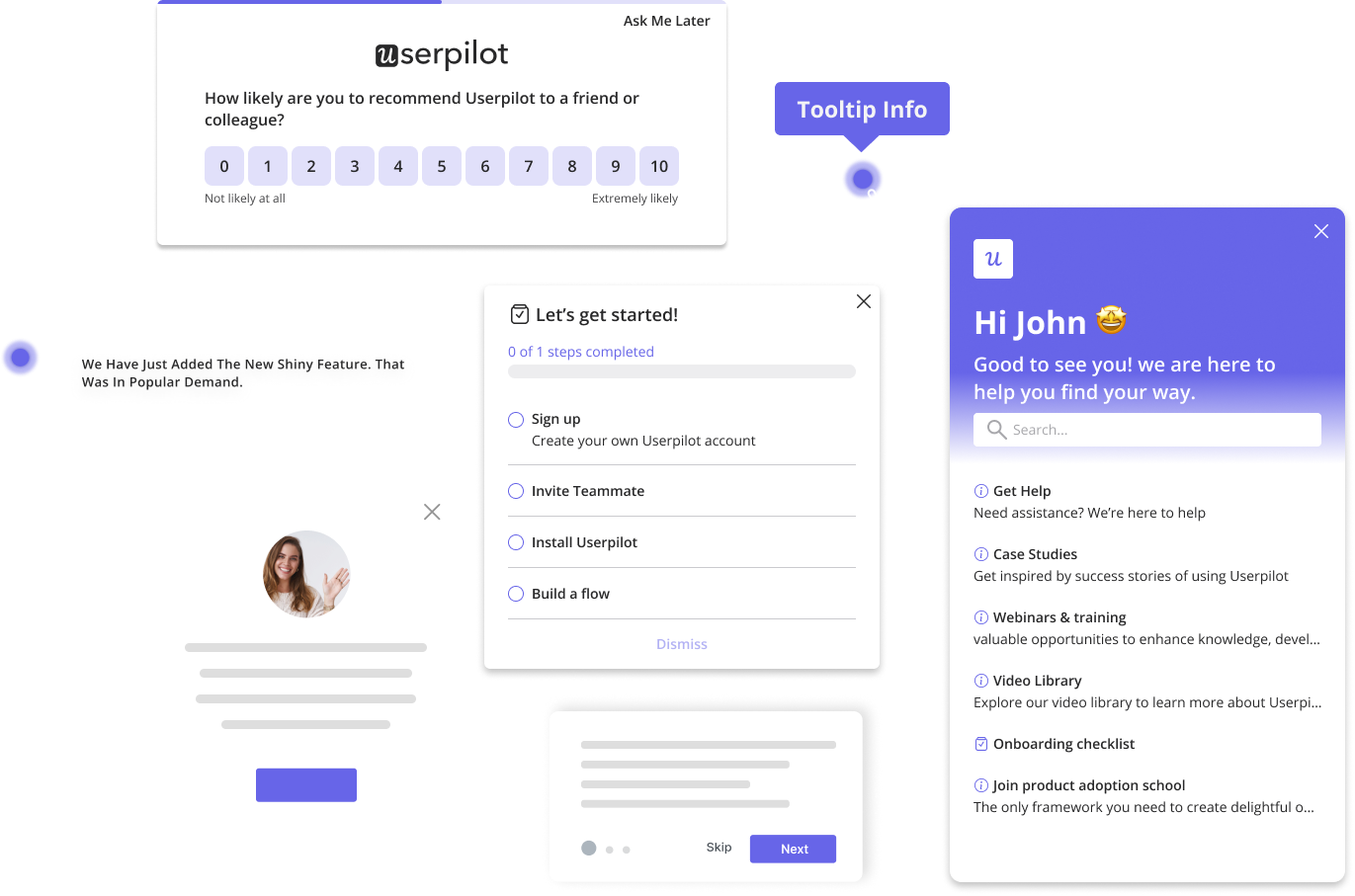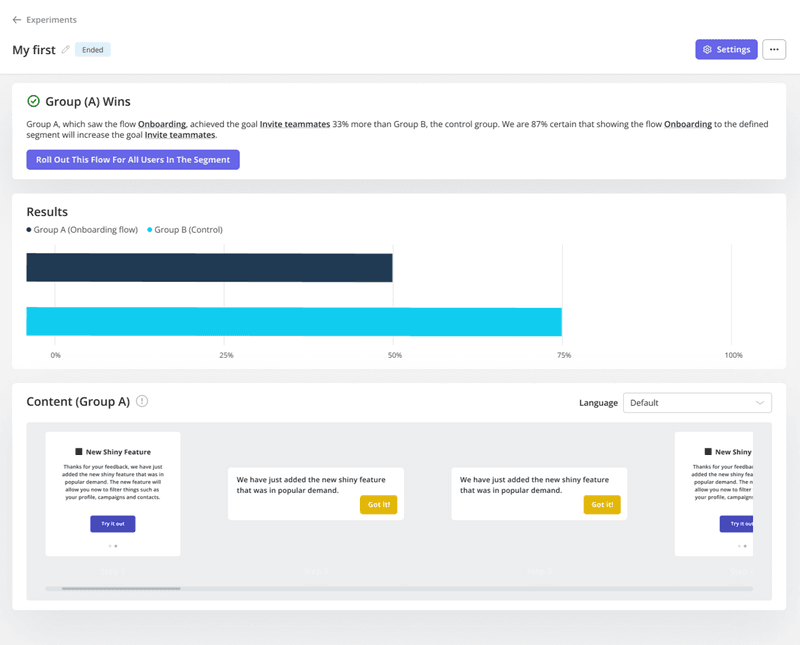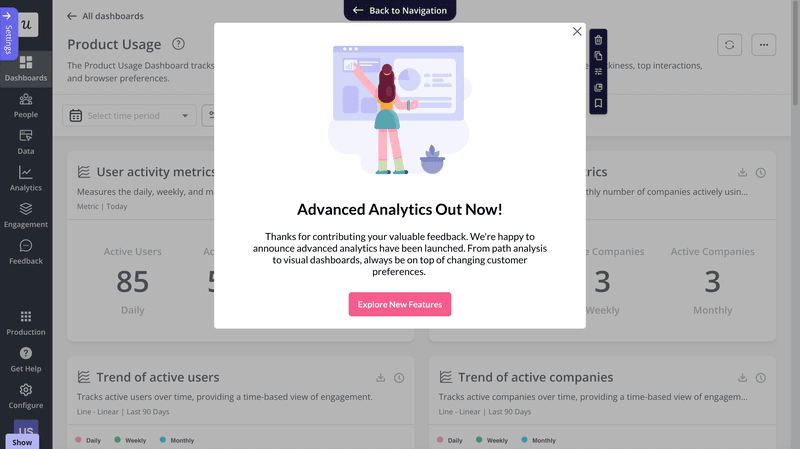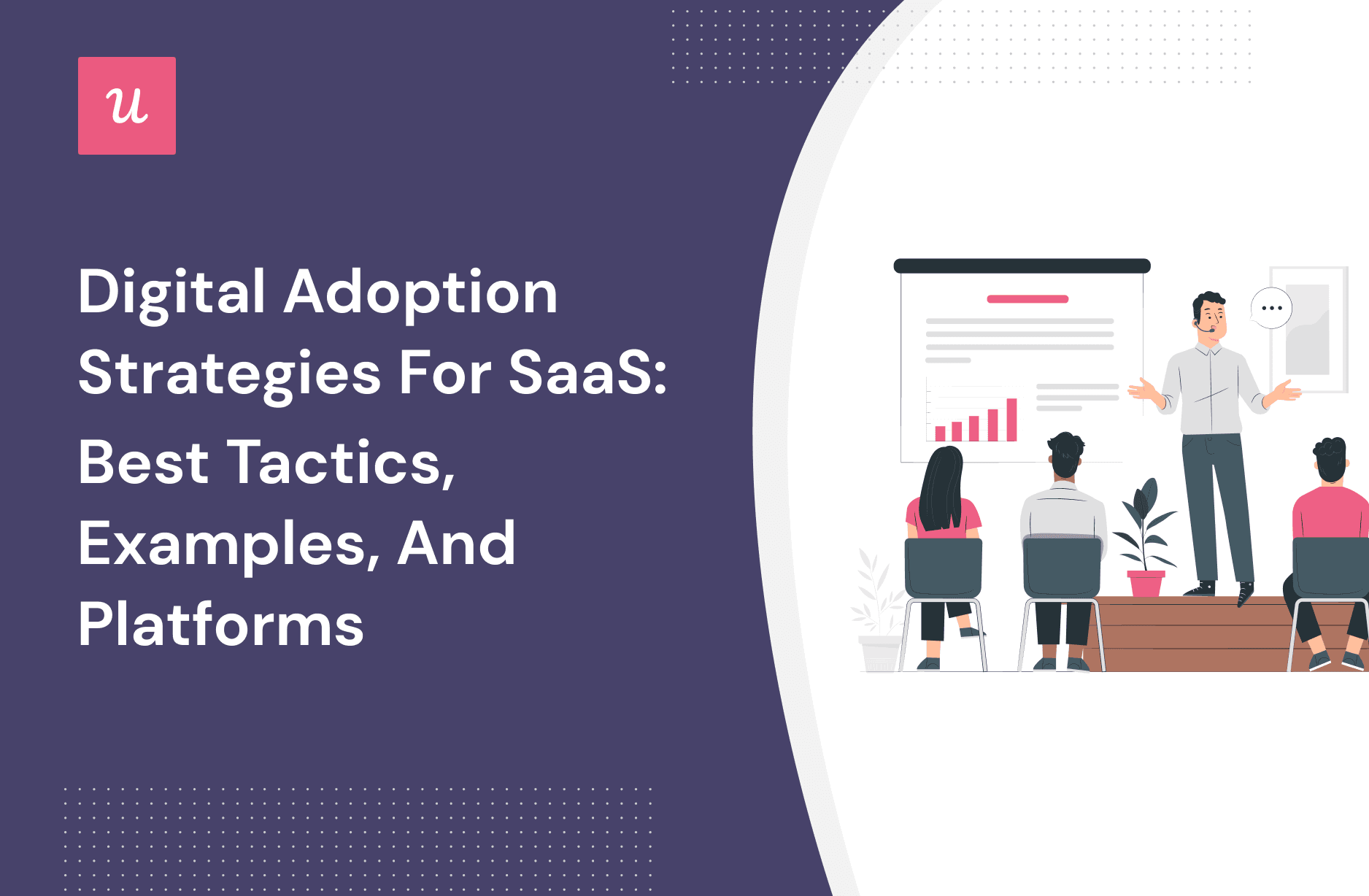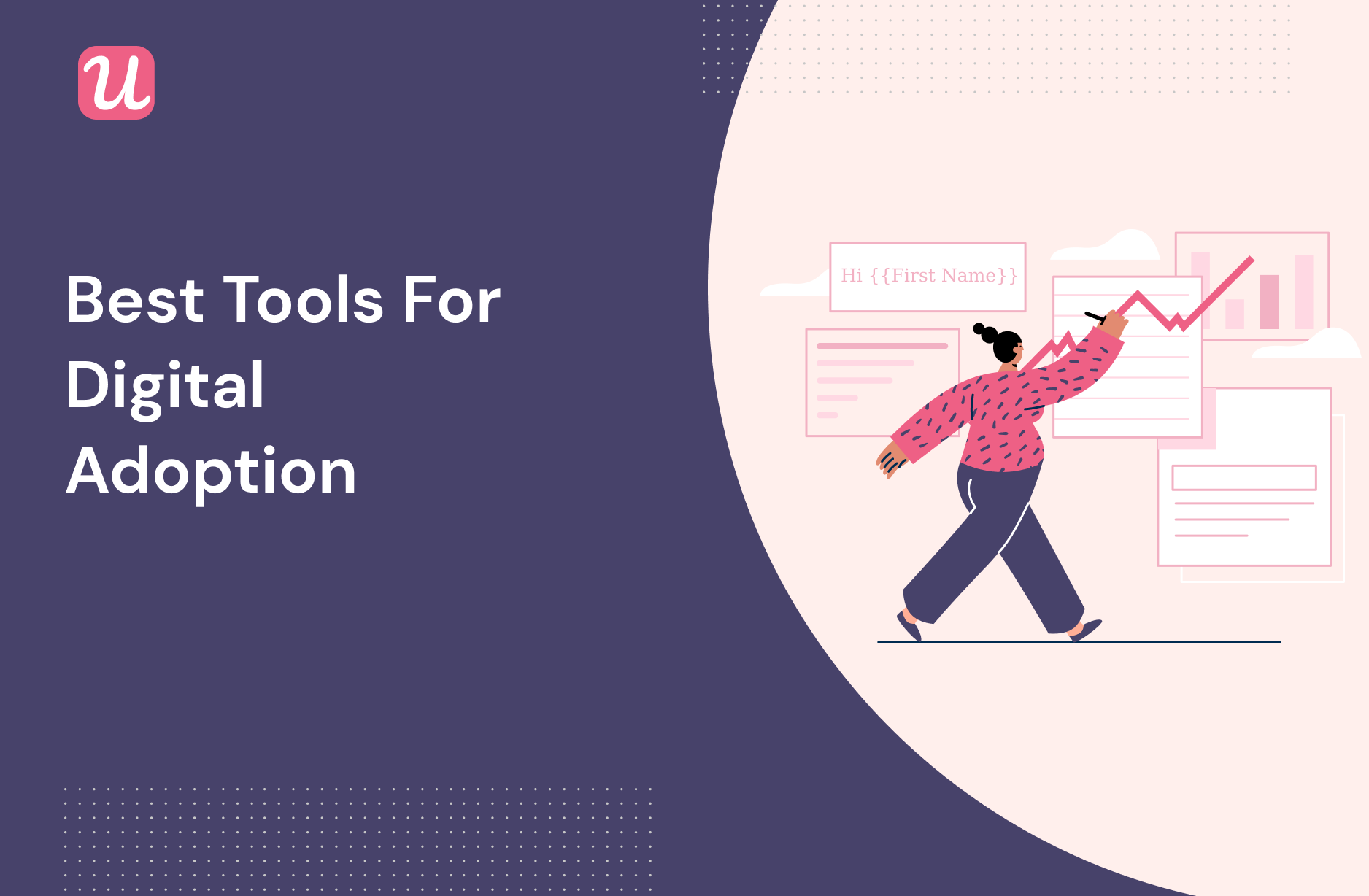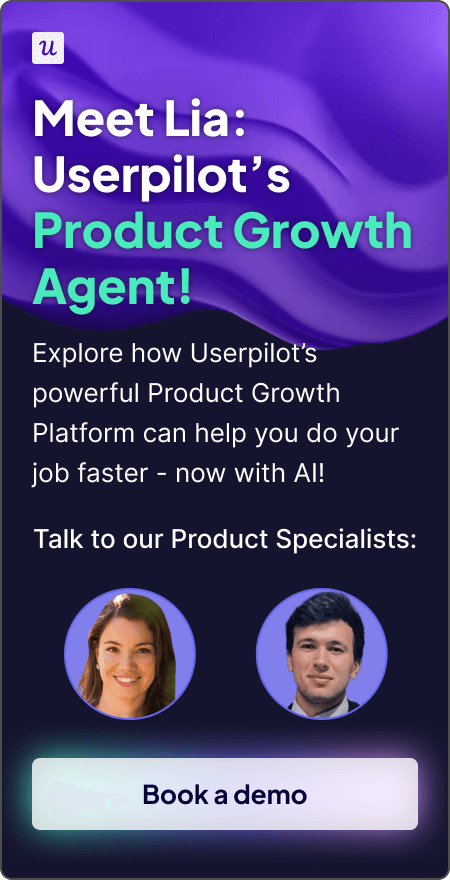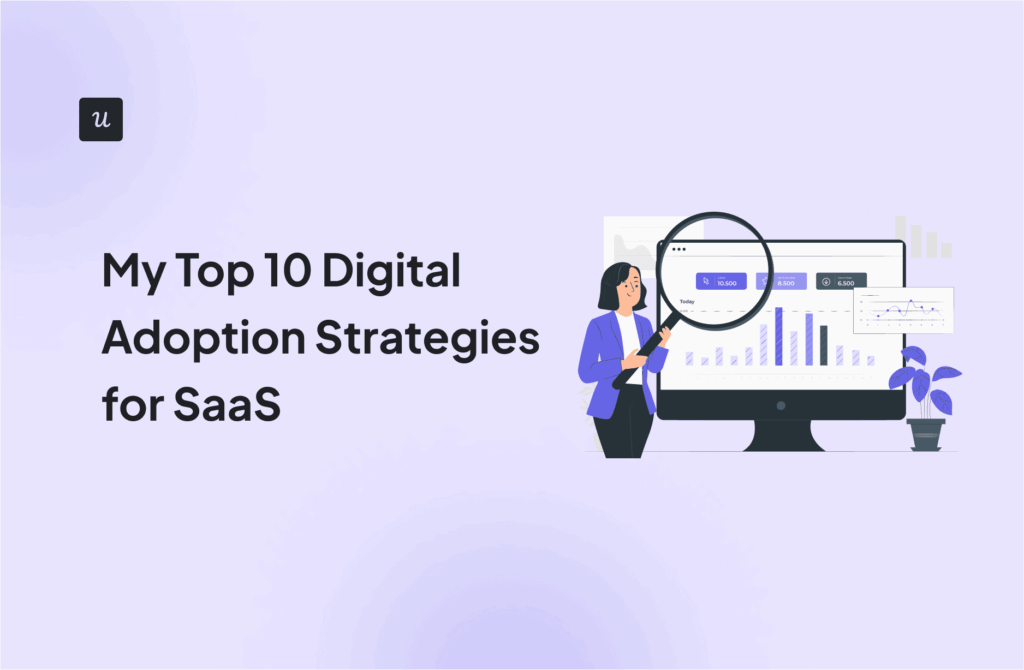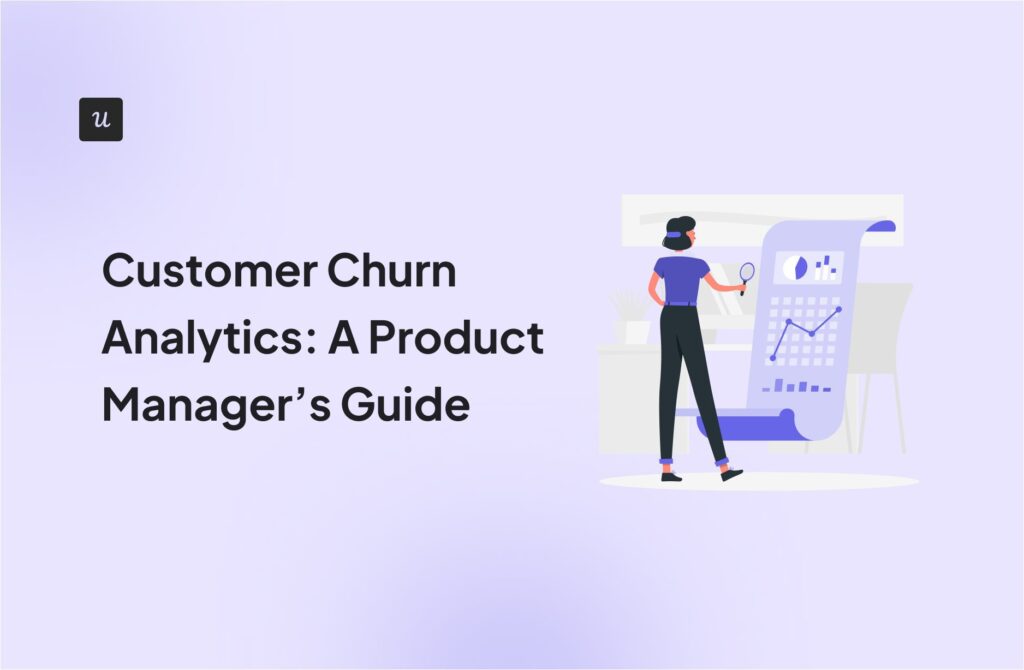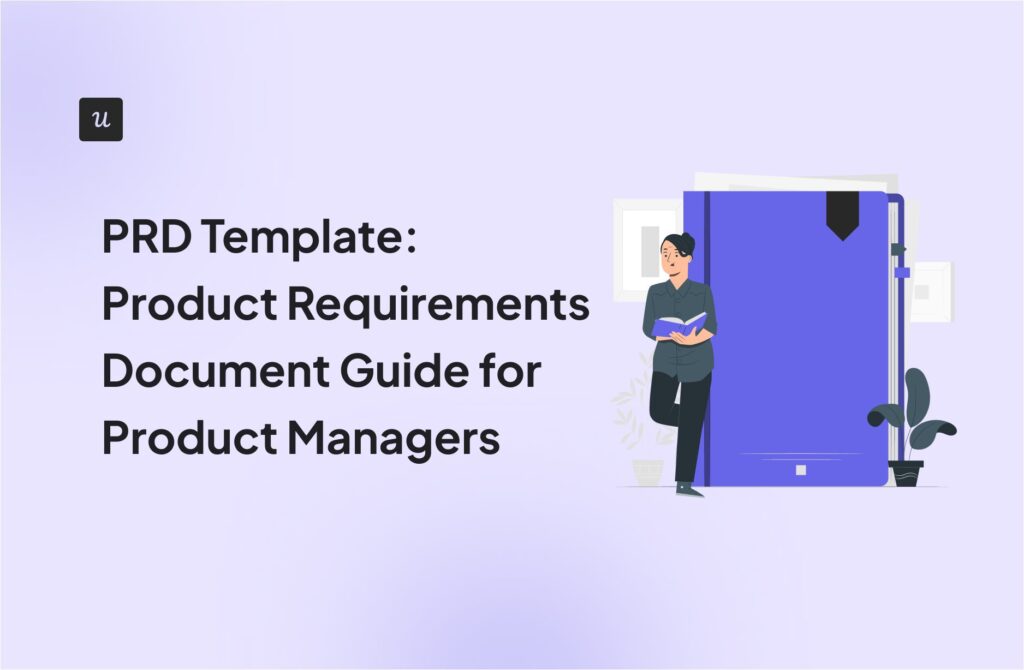
What Is Digital Adoption in SaaS? Meaning, Examples & How to Get It Right
For product managers, digital adoption is what separates users who quit after two weeks, from those who become power users driving growth.
A strong product adoption strategy cuts churn, lowers support costs, and makes your product essential to customers’ daily work. Users get more value, your revenue grows, and everyone wins.
This guide explores what digital adoption means for SaaS and how to build a successful strategy that drives it.
Try Userpilot Now
See Why 1,000+ Teams Choose Userpilot
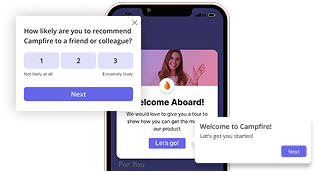
What is digital adoption?
Digital adoption is the process by which users learn to leverage a digital tool to its fullest potential, gaining the skill and understanding required to maximize its value.
For SaaS companies, this means ensuring our customers can seamlessly integrate our product into their workflows and consistently achieve their desired outcomes. Digital adoption emphasizes the people using the technology as much as the technology itself, aiming for a smooth, intuitive, and rewarding user journey.
As a Product Manager, I constantly strive to build features not just for their functionality, but for how they empower our users and simplify their lives. This approach is fundamental to creating products that genuinely resonate.
There are five main pillars that drive digital adoption:
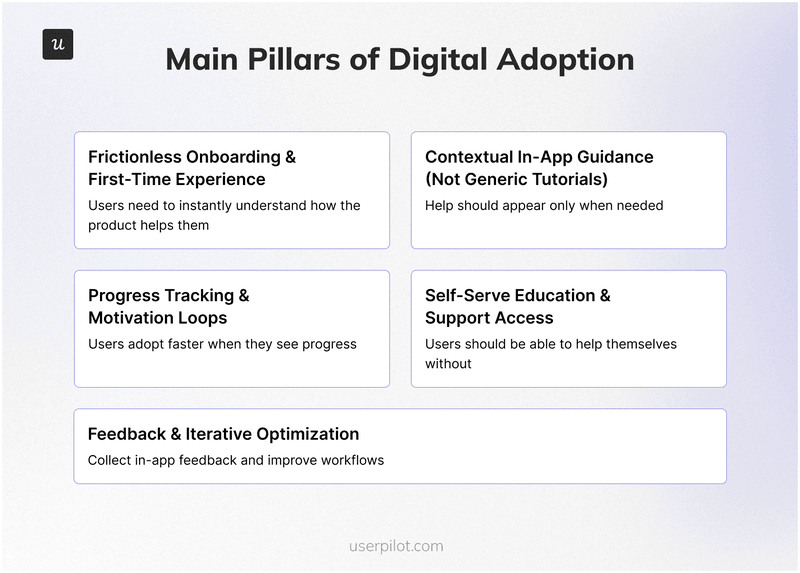
Find your digital adoption blindspot
Answer 3 quick questions to see where you can improve your digital adoption strategy.
What’s your biggest digital adoption challenge?
This helps identify the main point of friction for your users.
How do you currently guide new users?
Effective guidance is key to successful digital adoption.
How do you measure the success of your digital adoption?
If you can’t measure it, you can’t improve it.
It’s time to master your digital adoption
Stop guessing and start guiding. See how Userpilot can help you fix onboarding, drive feature adoption, and reduce churn—no code required.
Main types of digital adoption
There are two main types of digital adoption: user adoption and employee adoption.
User adoption focuses on external customers learning to use your SaaS product effectively. It’s about reducing time to value, driving feature discovery, and building habits that lead to retention and expansion.
Employee adoption centers on internal teams adopting new digital technologies and systems. For example, CRM platforms, project management software, or internal workflows. The goals here include increased productivity, process compliance, and reducing training overhead.
Throughout this article, we’ll focus on user adoption and how you can get more people to integrate your product into their daily routines.
Why digital adoption is critical for your SaaS product
Think about how some SaaS companies scale effortlessly while others burn through cash fighting churn.
For a SaaS business, digital adoption isn’t merely beneficial; it’s essential for long-term survival and sustained growth. I’ve seen firsthand how a strategic focus on adoption can fundamentally reshape a product’s trajectory.
Here’s why it’s so critical:
- Drives user value & satisfaction: When users can easily understand and effectively use your product, they naturally feel more satisfied and empowered. This user satisfaction translates into loyalty and advocacy. Effective adoption strategies help users reach their “Aha!” moment much faster and reduce their time to value (TTV).
- Boosts engagement & retention: Strong adoption signifies active, deep use. When users integrate your product into their daily routines and consistently find value, their engagement levels skyrocket. For subscription-based SaaS models, consistent engagement is paramount for achieving higher retention rates, ensuring customers continue their subscriptions rather than churning.
- Optimizes resources & insights: An intuitive product that users easily adopt requires less hand-holding. This translates directly to a reduced support load, freeing your customer success and support teams to focus on more complex issues. Furthermore, high adoption generates richer usage data, which is invaluable. This data provides deep insights, guiding future product improvements and empowering us to make informed data-driven decisions for our product roadmap.
Key challenges in achieving digital adoption
While the benefits of digital adoption are clear, achieving it isn’t always straightforward. I’ve observed several common hurdles that often require strategic foresight and preparation.
Understanding these digital adoption challenges is the first step toward overcoming them:
- User resistance to change: People are creatures of habit. Even when a new tool promises significant benefits, users may resist changing their established routines. This resistance can stem from a fear of the unknown, discomfort with learning new features, or simply a preference for familiar, albeit less efficient, methods. This often leads to user friction and can significantly slow digital adoption rates.
💡 Quick solution: Use progressive onboarding that introduces new technology gradually rather than overwhelming users on day one.
- Product complexity & feature overload: Many SaaS products are incredibly powerful and feature-rich. However, this wealth of functionality can overwhelm users, making the software seem overly complicated. When users experience feature fatigue, they might only use a tiny fraction of what the product offers, or worse, become frustrated and abandon it entirely. According to our 2025 product metrics benchmark report, the average core feature adoption rate across SaaS products is just 24.5%.
💡 Quick solution: Implement contextual in-app guidance that reveals features only when they’re relevant to the user’s current workflow.
- Inadequate guidance & onboarding: A brilliant product needs clear and compelling guidance. If users don’t receive adequate, contextual, and engaging onboarding, they will inevitably struggle to understand the value of your product and will churn.
💡 Quick solution: Create interactive walkthroughs that enable users to learn by doing rather than watching.
- Difficulty in measuring effectiveness: Without the right metrics, analytics tools, and a clear understanding of what to measure, it’s challenging to accurately measure product adoption and understand its tangible impact on business goals. This lack of insight can hinder continuous improvement.
💡 Quick solution: Start by tracking three core metrics: activation rate, feature adoption rate, and time to value.
How to build a successful digital adoption strategy
Building an effective digital adoption strategy requires a methodical, user-centric approach that connects every touchpoint to measurable outcomes.
Our approach includes four essential steps that foster sustainable growth:
- Define clear adoption goals tied to business metrics.
- Map your user journey to understand where guidance matters most.
- Craft engaging experiences that deliver value at each stage.
- Continuously optimize based on data and feedback.
Step 1: Define your adoption goals
Before considering any tool or onboarding method, you must have an unequivocal understanding of what you aim to achieve. Simply aiming for “high usage” isn’t enough; your goals must tie directly to measurable business outcomes.
What are your specific, measurable business goals?
Is it to reduce customer support tickets by 20% by enabling self-service?
Increase customer satisfaction (CSAT) by 10 points through a more intuitive interface?
Or cut the time to value from 14 days to 3 days for new users?
Clearly articulating your objectives helps you form the backbone of your entire digital adoption plan.
Let’s say your objective is to streamline user onboarding in a regulated industry like financial services. Your digital adoption strategy would involve meticulously guiding users through a new, compliant digital application process, complete with in-app prompts and clear explanations at each step. This approach ensures that you retain users and adhere to regulations.
I’d also recommend that you define your North Star metric early on. This single, unifying metric helps keep every team aligned and focused on delivering core value, acting as a compass for your digital adoption framework.
Step 2: Map the user journey to your goals
You cannot build effective solutions or design successful adoption strategies without a deep, empathetic understanding of the people who will be using your products.
Yes, you may have a general idea of your user base. However, this approach means going beyond surface-level demographics to uncover their:
- Daily workflows.
- Preferred learning styles.
- Most pressing pain points.
- What truly motivates them to embrace new tools.
This granular understanding is fundamental to crafting an effective user adoption strategy.
Your digital adoption strategy must address each customer journey stage with targeted interventions that move users forward.

Here’s an example of the main goal for each stage in terms of driving user adoption.
| Stage | Main Goal |
|---|---|
| Awareness | Inform the user about the issue and position your product as the solution. |
| Consideration | Educate users on value and differentiation to build trust and intent. |
| Decision | Remove friction from sign-up or trial to secure commitment quickly. |
| Activation | Deliver the first “Aha!” moment as fast as possible. |
| Adoption | Build consistent usage through in-app guidance and habit reinforcement. |
| Renewal | Prove ongoing value with measurable outcomes and usage insights. |
| Expansion | Identify power users and expose them to advanced features or add-ons. |
| Loyalty | Turn satisfied users into advocates through recognition and feedback loops. |
Each stage demands a different approach. A user in the activation stage needs quick wins and clear next steps, not a feature tour. A user approaching renewal needs data showing ROI, not another onboarding checklist.
Map your adoption tactics to these stages, and you’ll see dramatically better results.
Step 3: Craft engaging experiences to drive digital adoption
Effective customer training must be an ongoing, interactive process seamlessly woven into the user experience itself, forming a core pillar of your digital adoption strategy.
Your primary goal here is to drastically reduce the time to value for every user, enabling them to achieve their goals with your product as quickly and painlessly as possible.
Once you’ve mapped the user journey, the next step is matching the right strategies to each stage. Here’s how to craft customer experiences that drive adoption at every journey stage:
| Stage | Main Goal | Key Strategies |
|---|---|---|
| Awareness | Inform the user about the issue and position your product as the solution. | • Publish comparison pages & pain-focused content. • Run targeted ads on category keywords. • Leverage influencer/partner mentions. • Use outcome-focused messaging (not feature noise). |
| Consideration | Educate users on value and differentiation to build trust and intent. | • Offer interactive demos/sandbox tours. • Use ROI calculators & case studies. • Create competitor vs. “alternative to” pages. • Host webinars focused on “how” not “what”. |
| Decision | Remove friction from sign-up or trial to secure commitment quickly. | • Offer frictionless signup (SSO, no credit card). • Personalize onboarding path from the signup form. • Highlight “time-to-value” expectations upfront. • Add live chat or human touchpoint here. |
| Activation | Deliver the first “Aha!” moment as fast as possible. | • Trigger goal-based onboarding checklists. • Use contextual tooltips only when needed. • Auto-import data or preload templates. • Reward first key action with progress cues. |
| Adoption | Build consistent usage through in-app guidance and habit reinforcement. | • Introduce advanced features progressively. • Use usage-based nudges (“You haven’t tried X yet”). • Offer in-app resource center & self-help. • Automate weekly usage recaps via email. |
| Renewal | Prove ongoing value with measurable outcomes and usage insights. | • Send quarterly value reviews or reports. • Surface ROI metrics inside the dashboard. • Use in-app surveys to catch dissatisfaction early. • Flag low-usage accounts for proactive outreach. |
| Expansion | Identify power users and expose them to advanced features or add-ons. | • Trigger “upgrade moments” when usage caps are hit. • Showcase premium features via tooltips or modals. • Recommend add-ons based on behavior patterns. • Bundle features by job-to-be-done. |
| Loyalty | Turn satisfied users into advocates through recognition and feedback loops. | • Automate NPS-based referral or review prompts. • Invite power users into beta or VIP programs. • Feature them in customer spotlights or webinars. • Offer loyalty discounts or perks. |
We’ll dive into the most effective digital adoption strategies, including real-world examples, shortly.
Step 4: Continuously optimize: Measure, iterate, and refine for sustained impact
A successful digital adoption strategy is never static. It’s a living, breathing process that requires ongoing monitoring, rigorous analysis, and continuous adjustment.
The notion that “we’re done once users are using it” is a fallacy.
I emphasize the need to know precisely what’s working, what’s not, and, most importantly, why. This data-driven approach is fundamental to achieving sustained success and is a hallmark of the digital adoption framework:
- Track core adoption metrics: Diligently monitor product adoption metrics such as feature adoption rates, overall user engagement levels, and long-term customer retention. These metrics provide a clear picture of user behavior post-onboarding and the overall health of your adoption efforts. Userpilot’s product usage analytics provides deep, actionable insights into how users interact with your product. You can easily see core feature engagement and track the effectiveness of your initial user activation efforts through a dedicated New Users Activation Dashboard that supports ongoing digital adoption.
- A/B test experiences: Don’t rely on guesswork when optimizing your adoption flows. A/B testing different onboarding sequences, messaging variations, or calls to action allows you to determine what resonates most effectively with your user base empirically. Userpilot’s experimentation tools empower you to compare variations side by side and make data-driven decisions that lead to higher adoption rates and a successful digital adoption strategy.
- Use session replays: To truly understand the “why” behind specific user behaviors, sometimes you need to witness it firsthand. Session replays enable you to watch actual user sessions, providing invaluable qualitative insights into where users encounter friction, struggle with confusing UI elements, or encounter unexpected bugs. Userpilot’s session replay feature is a powerful tool for troubleshooting issues and enhancing user experience research, directly informing strategic adjustments to your digital adoption roadmap.
- Close the feedback loop: Collecting feedback is only half the battle. You must analyze the input, synthesize it into actionable insights, and then take action based on them. Ensure that users are aware that their input is valued and, whenever possible, demonstrate how their suggestions have led to tangible improvements. This iterative process builds trust, fosters a sense of ownership, and encourages continuous engagement with your product, turning users into invested stakeholders in your product adoption strategy.
Effective digital adoption strategies to implement in your product
Theory is helpful, but seeing real companies achieve results helps you see how practical these strategies are. Here are four success stories that demonstrate true digital adoption.
1. Create a seamless onboarding experience: Talana’s success
Talana, an HR solutions platform offering eight different products, faced a critical scaling problem.
As their customer base grew, manually onboarding each user became impossible. Their initial solution, Intercom, couldn’t handle dynamic URLs that changed per customer, making it impossible to create consistent onboarding flows.
After switching to Userpilot, Talana built interactive walkthroughs and onboarding checklists that worked seamlessly despite their complex, multi-product architecture.
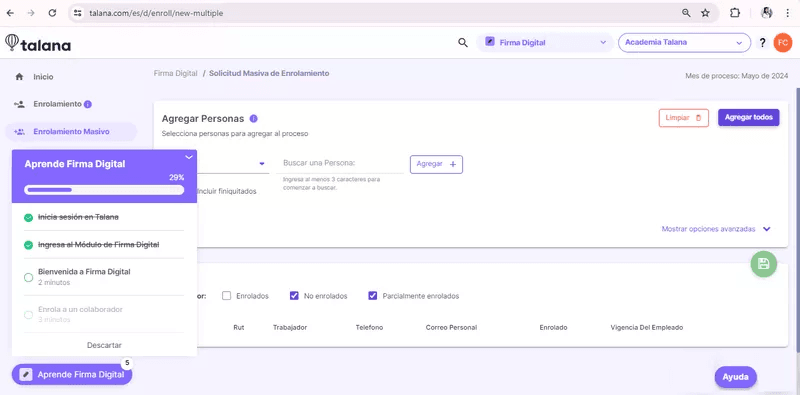
They created contextual tooltips and modals to guide users through key workflows, and implemented an in-app resource center to enable self-service support at scale.
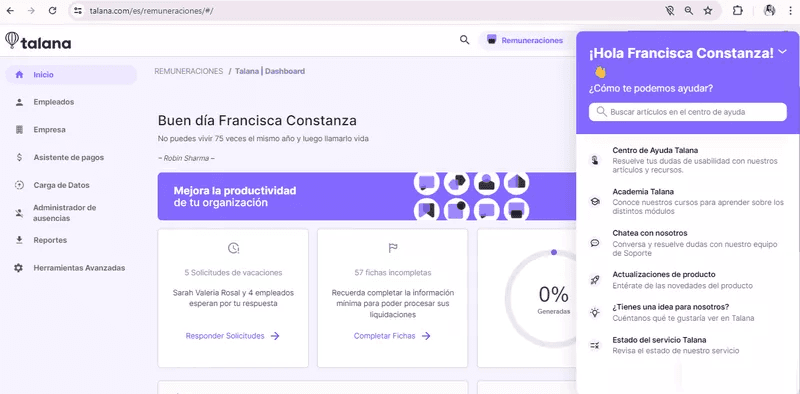
Talana also utilized Userpilot’s product analytics to track user adoption metrics, including MAU and NPS.
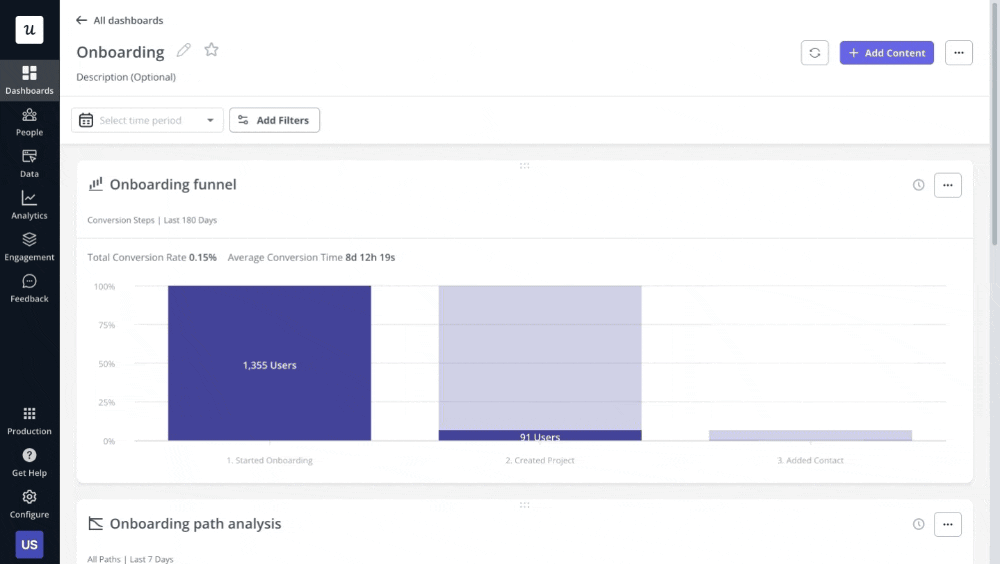
The results? Talana saw 35.6% engagement with their in-app messages and 31% with tooltips. Their resource center visibility skyrocketed, dramatically reducing support dependency.
We are really happy customers of Userpilot. Really, it’s been a great experience because we always have help from Isabela or Cornelia and you also answer really fast in the chat. – María Ignacia Videla, Head of Communication and Content at Talana
2. Drive adoption in-app: Kommunicate’s success
Kommunicate, a chat-based customer support platform, discovered a troubling pattern: 60-70% of users only touched 3-4 features, constantly requesting capabilities that already existed in the product. Users weren’t seeing value because they didn’t know what was available.
The team used Userpilot to create targeted adoption cues. They started with a simple notification bar driving chatbot integrations, which increased signup-to-integration rates from 40-45% to 55-60%.
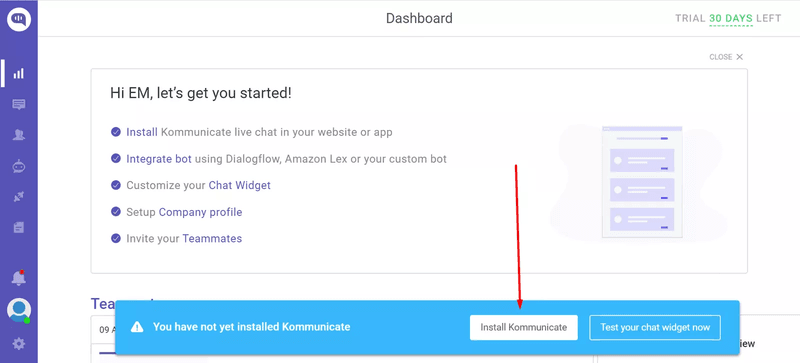
Next, they developed an onboarding checklist that highlighted five Aha moments consistently experienced by paying customers, resulting in a 4% improvement in adoption rates.
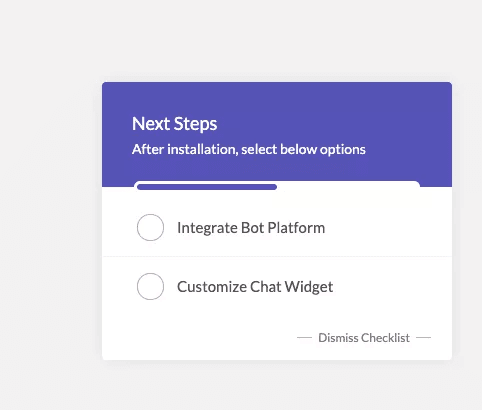
They also created interactive walkthroughs for chat widget customization, achieving 86% completion and a 3% increase in feature usage.
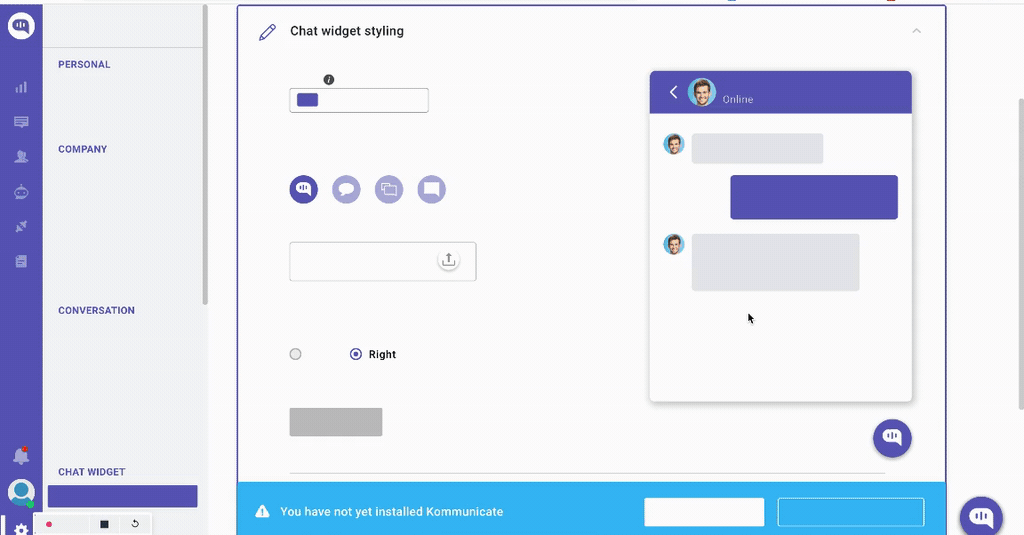
As Kommunicate’s team noted, even a 5% increase in feature adoption translates to a 2-3% increase in revenue.
3. Use behavior-based nudges to drive feature discovery: Attention Insight’s success story
Attention Insight, an AI-powered heatmap analysis tool, had a frustrating problem. They offered a generous one-click free trial and an intuitive product. However, only 47% of trial users created their first heatmap analysis, and just 12% engaged with their critical “Areas of Interest” feature.
They implemented a comprehensive onboarding strategy using Userpilot’s interactive walkthroughs with driven actions. For example, UI prompts that encourage users to take specific actions in real-time.
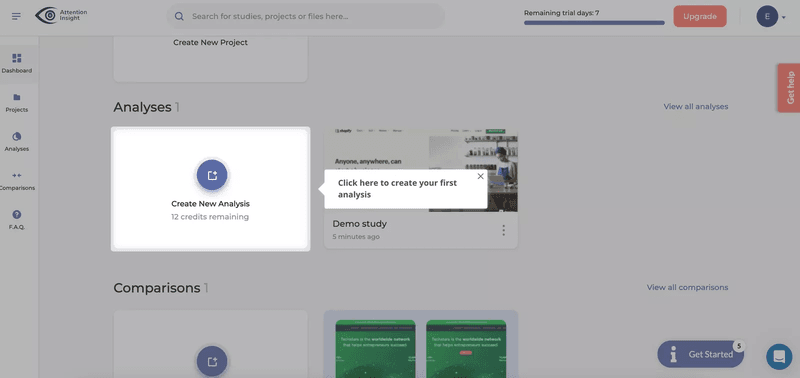
They combined this with an onboarding checklist that leveraged the Zeigarnik effect (people’s tendency to remember incomplete tasks). It also included contextual slideouts that celebrated wins and strategic hotspots that highlighted hidden features.
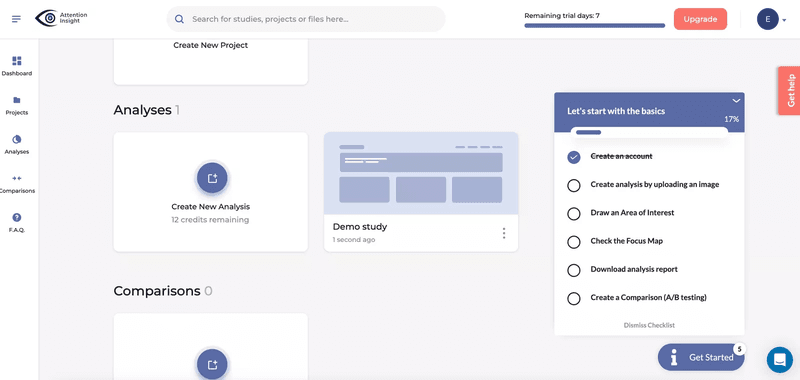
Within six months, heatmap creation increased by 47%, and engagement with “Areas of Interest” increased by 83%. This dramatic activation boost directly impacted trial-to-paid conversions.

4. Iterate your adoption strategy based on analytics: Beable’s success
Beable, a K-12 e-learning platform, needed to understand how different user segments (students, teachers, and administrators) engaged with their product. They initially tried Google Analytics 4 but found it too complex and developer-dependent.
After adopting Userpilot, Beable used no-code page tagging to track feature engagement. This approach allowed them to discover that their new in-house Educator Academy attracted 1,681 unique visitors, compared to just 105 with their previous third-party tool.
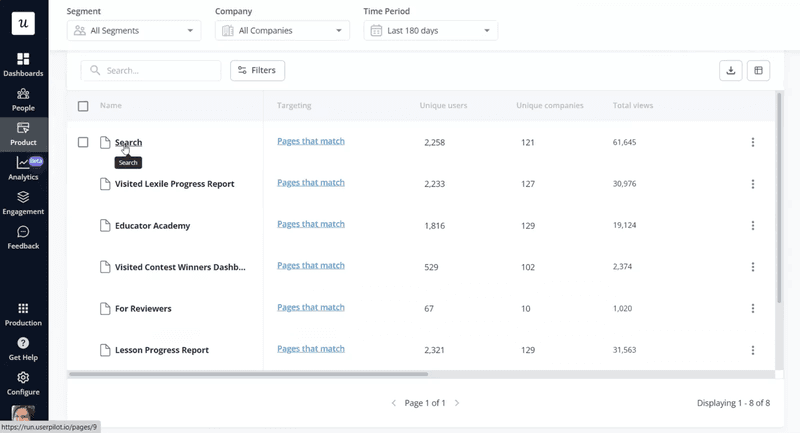
Then, they implemented funnel analysis to monitor how students engaged with content. This way, they tracked everything from spotlight clicks to video views to survey completions.

Most impressively, they used in-app surveys to drive student participation, achieving a 76.59% completion rate on a survey that asked about contest prizes.
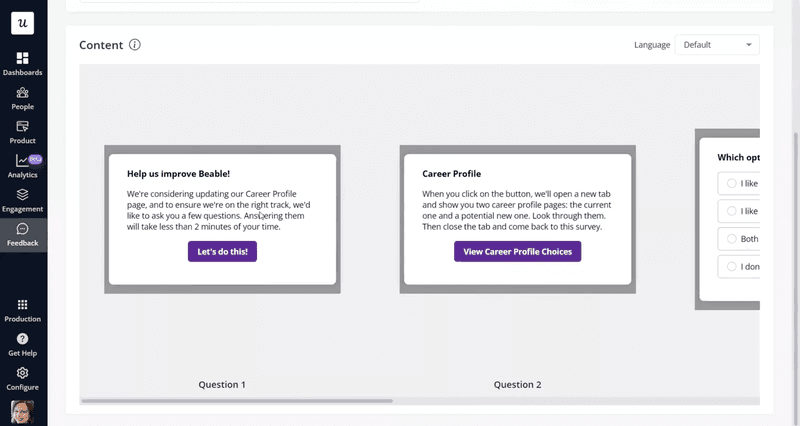
This data directly informed their product roadmap and design decisions, creating a continuous feedback loop that keeps improving the user experience.
Beable also provided self-service support with Userpilot’s resource center analytics to their different user segments. In addition to our resource center analytics, they can optimize their content to help users better.
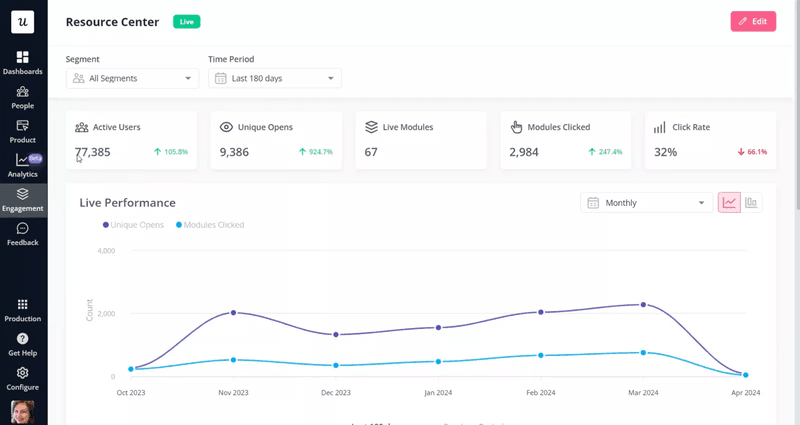
How to track digital adoption in SaaS
To truly understand if your digital adoption efforts are yielding results, precise measurement is crucial. Here are the key metrics I focus on:
1. Login frequency & active Users (DAU, WAU, MAU): These metrics indicate consistent product use and overall engagement. Tracking Daily, Weekly, and Monthly Active Users helps confirm that users are regularly returning to the product, a fundamental sign of adoption. Our product usage dashboard provides a quick overview of these metrics.
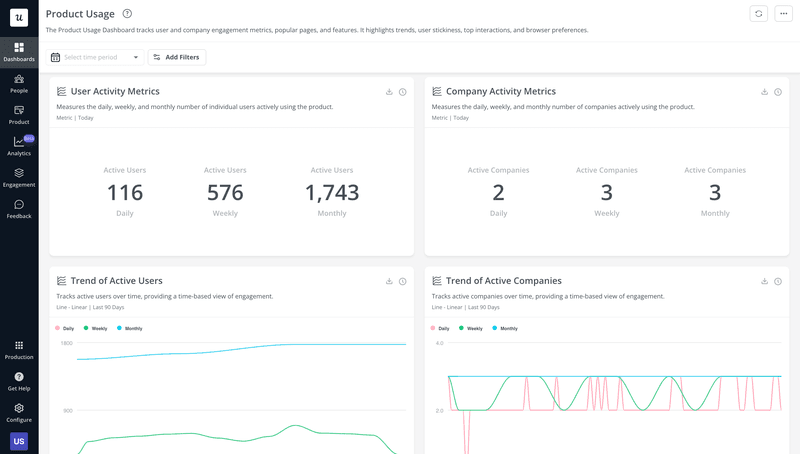
2. Feature adoption rates: This shows if users are not only logging in but also finding and leveraging your core features, confirming that they are deriving real value. Monitoring the use of specific features over time is critical for understanding product stickiness and value perception.
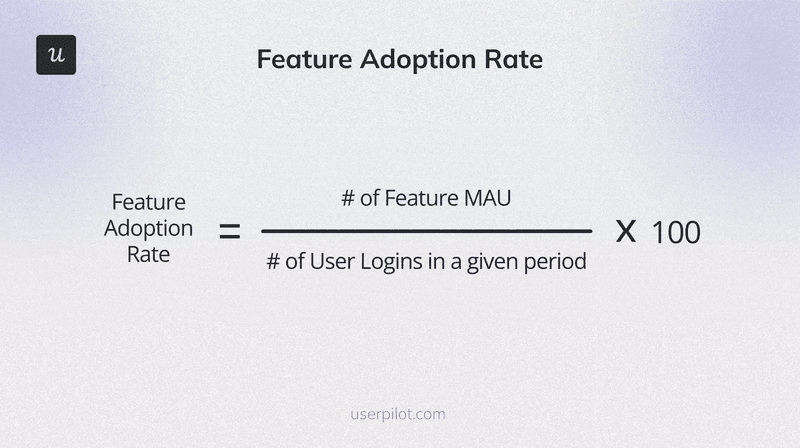
3. Time to Value (TTV): TTV measures how quickly new users achieve their first significant success or “Aha!” moment within the product. A lower TTV is a key indicator of effective onboarding and rapid adoption, leading to quicker user activation.
4. Help desk tickets & user feedback: Ideally, an increase in product use should correlate with a decrease in support queries related to basic usability. I monitor trends in support tickets and assess sentiment through customer feedback analysis, including surveys, to identify areas of friction or confusion.
5. NPS & CSAT scores: These customer satisfaction metrics directly reflect user sentiment and loyalty. High NPS (Net Promoter Score) and CSAT scores indicate happy users who are likely to recommend your product, driving crucial SaaS growth. The right tools like Userpilot’s NPS analytics offer detailed insights into these scores.
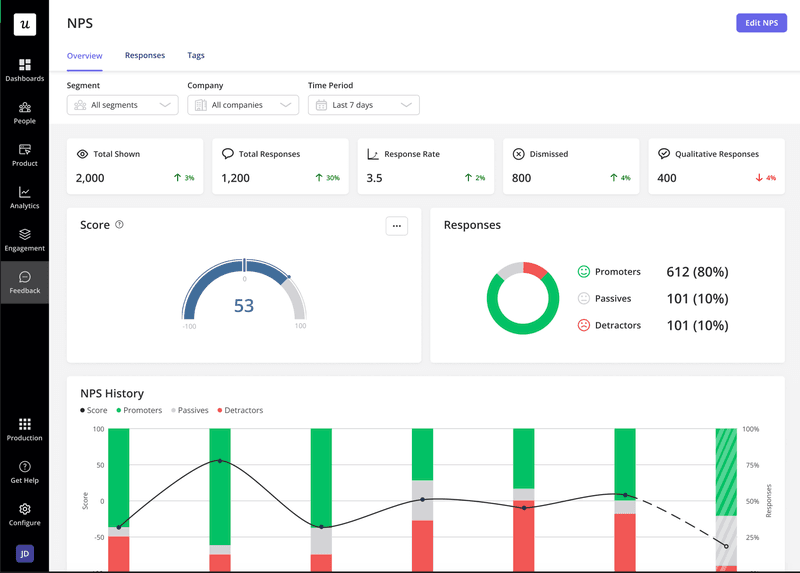
To track digital adoption success effectively, you need robust analytics tools. Userpilot’s custom dashboards, retention reports, and NPS analytics provide the deep insights. Such insights help you understand user behavior and refine your technology adoption strategy.
Top 10 digital adoption tools
Implementing a comprehensive suite of digital adoption strategies can seem daunting, often requiring significant development resources. This is where digital adoption platforms (DAPs) become invaluable.
From my perspective, DAPs are essential for agility. They empower product teams to iterate on user experiences quickly, test different adoption approaches, and personalize user journeys. All without constant reliance on developer involvement.
A robust DAP typically offers key capabilities such as no-code builders for interactive walkthroughs, flexible in-app guidance, advanced segmentation and personalization features, powerful analytics for tracking impact, built-in feedback tools, and increasingly, mobile support.
Here’s a quick overview of the leading digital adoption platforms:
| Tool | Best for | G2 review | Main features for digital adoption | Pricing | Explore more |
|---|---|---|---|---|---|
| Userpilot | Product-led SaaS teams that want in-app onboarding and analytics without engineering heavy lift | 4.6/5 | No-code flows (checklists, tooltips, modals), contextual targeting, in-app resource center, NPS/CSAT, session replays, product analytics, segmentation, Email & mobile support | Starts at $299/month (billed annually); usage-based at higher tiers (check latest) | Userpilot features |
| Pendo | Product orgs needing in-app guidance + robust analytics across web/mobile | 4.4/5 | Guides & walkthroughs, in-app messaging, product analytics, feedback, roadmapping (add-on), mobile support | Mostly quote-based for the full suite | Userpilot vs Pendo |
| Whatfix | Enterprise DAP for employee & customer adoption with heavy process guidance | 4.6/5 | In-app task flows, smart tips, self-help, SCORM export, analytics, multi-app workflows, SSO | Quote-based (enterprise) | Whatfix alternatives |
| WalkMe | Complex enterprise workflows and change management at scale | 4.5/5 | Cross-app guidance, automations, insights, governance, accessibility/localization controls | Quote-based (enterprise) | WalkMe overview |
| Apty | Process-heavy internal apps (CRM/ERP) needing compliance and task compliance tracking | 4.7/5 | Step-by-step guidance, validation, role-based flows, adoption analytics, and compliance | Quote-based | Userlane vs Apty |
| Userlane | Employee onboarding and process adoption for business apps | 4.7/5 | Interactive walkthroughs, automation, analytics, multi-app support | Quote-based | Userlane alternatives |
| Appcues | Self-serve, marketing/PMM-led onboarding for product teams | 4.6/5 | No-code tours, checklists, banners, segmentation, basic analytics, NPS | Starts at $300/month | Appcues overview |
| Chameleon | Product marketers who want highly branded, granular in-app experiences | 4.4/5 | Tours, tooltips, launchers, surveys, targeting, integrations | Starts at $279/month | Chameleon overview |
| UserGuiding | Budget-friendly onboarding for early-stage SaaS | 4.7/5 | Product tours, hotspots, checklists, resource center, NPS | Starts at $174/month(billed annually) | UserGuiding overview |
| Gainsight PX | Product orgs tying adoption to CS workflows in the Gainsight ecosystem | 4.4/5 | In-app guides, surveys, feature analytics, engagements, CS integration | Quote-based | Gainsight PX overview |
With an all-in-one platform like Userpilot, you save the stress and time of juggling tools. Everything you need to grow your product is in one place.
Ready to see how Userpilot can transform your digital adoption strategy? Book a demo and see how more users adopt your product.
FAQ
What does digital adoption mean for SaaS users inside the product?
For SaaS users, digital adoption means reaching a point where the product becomes an intuitive, indispensable part of their daily workflow. It’s not just logging in occasionally. Instead, users confidently use core features to complete tasks, discover helpful advanced capabilities, and achieve consistent outcomes without constant support.
What is a digital adoption platform (DAP)?
A digital adoption platform is a software layer that helps your product deliver contextual, in-app tutorials without requiring code changes. DAPs guide users through complex workflows using interactive walkthroughs, tooltips, checklists, and self-serve resource centers. These features allow you to shorten time to value and reduce support dependency.
How does a DAP work?
Most DAPs integrate with your product through a lightweight code snippet. They track user behavior in real-time and trigger contextual guidance based on specific actions, user segments, or milestones. For example, if a user hasn’t explored a key feature after 7 days, the DAP can display a targeted tooltip explaining its value when they need it.
Why does digital adoption matter for SaaS customers’ time-to-value and retention?
Digital adoption impacts how quickly users realize value from your product. When users understand how to use your product effectively, it’s easier to retain them. They reach their “Aha!” moment faster, see measurable results sooner, and integrate your product into their routines. This early success fosters loyalty and significantly reduces churn rate.
What are the key user milestones in SaaS adoption (from signup to habit)?
The journey typically follows these milestones:
- Signup (initial commitment).
- Activation (completing the first key action).
- Adoption (regular feature usage).
- Habit formation (product becomes part of daily routine).
- Expansion (exploring advanced features or add-ons).
- Advocacy (recommending the product to others).
Each milestone requires different engagement strategies to keep users progressing.
What are the biggest challenges to digital adoption?
The four major challenges we see are:
- User resistance to change.
- Product complexity and feature overload.
- Inadequate onboarding and contextual help.
- Difficulty measuring what’s actually working.
Solutions like progressive disclosure, behavior-based nudges, and a robust product analytics strategy can help you overcome these challenges.
How do you create a digital adoption strategy?
To create a digital adoption strategy:
- Begin by defining clear, measurable digital adoption goals that align with specific business outcomes.
- Map your user journey to identify friction points and opportunities for improvement.
- Craft stage-specific experiences that deliver value at each touchpoint.
- Track user progress to continuously optimize based on data, A/B testing, and user feedback.
The key is connecting every tactic to measurable results.
Which in-product metrics best capture SaaS user adoption (activation, feature usage, stickiness)?
Together, these metrics paint a complete picture of your SaaS user adoption:
- Activation rate (users completing core actions).
- Feature adoption rate (percentage using key features).
- Daily/Weekly/Monthly Active Users (engagement frequency).
- Time to Value (speed to first success).
- Retention cohorts (long-term stickiness).
Ensure you monitor all of them to spot poor digital adoption quickly.
What features should a DAP include?
A robust DAP should have:
- A no-code builder for creating experiences.
- Contextual in-app guidance (tooltips, modals, checklists).
- Behavioral segmentation for personalization.
- Product analytics to track impact.
- Feedback collection tools (surveys, NPS) to measure customer satisfaction.
- Session replay for qualitative insights.
- Email and mobile support for engagement across multiple channels.
How long does it take to implement a DAP?
You can implement most DAPs in days. Basic installation involves adding a code snippet and configuring initial experiences. Your first interactive walkthroughs can be live within a week or an hour, depending on your tool.
DAP vs LMS/knowledge base — what’s the difference?
A learning management system (LMS) or knowledge base provides centralized training resources where users seek information about your product. However, a DAP delivers contextual guidance in your product when users need it. One is a resourceful documentation, while the other is a proactive, embedded assistance that appears at the moment of friction.
Digital adoption vs digital transformation in SaaS—what’s the difference for end users?
Digital transformation is the broader organizational shift toward digital processes and technologies. Digital adoption is the practical execution that ensures users leverage those new digital tools effectively. You can push digital transformation efforts all you want, but without adoption, your technology investments deliver no value.
How do you improve user adoption in SaaS?
Here’s how you can have better user adoption for your SaaS product:
- Focus on reducing friction at every touchpoint.
- Simplify onboarding with goal-based checklists.
- Provide contextual in-app help exactly when needed.
- Implement gamification by celebrating small wins to build momentum.
- Offer multiple learning formats (interactive tours, video, text).
- Continuously iterate based on user behavior data and feedback.
Who should own digital adoption?
No one person should own digital adoption, as it requires cross-functional ownership. Typically:
- Product managers lead strategy and prioritization.
- Product marketing handles messaging and positioning.
- Customer success monitors health metrics and intervenes with at-risk customers.
- Engineering implements the infrastructure.
How do you choose the right DAP?
Evaluate the right DAP based on your specific needs, such as:
- Ease of implementation.
- Depth of analytics and segmentation.
- Mobile and email support if needed.
- Supported integration.
- Pricing model.
Most importantly, choose a platform that scales with your product complexity and provides actionable insights, not just deployment capabilities.

